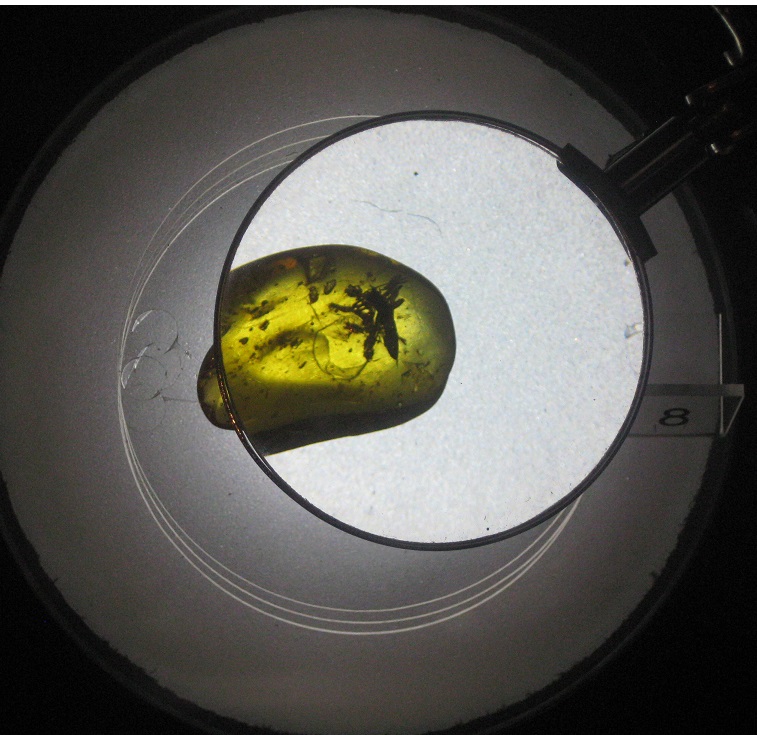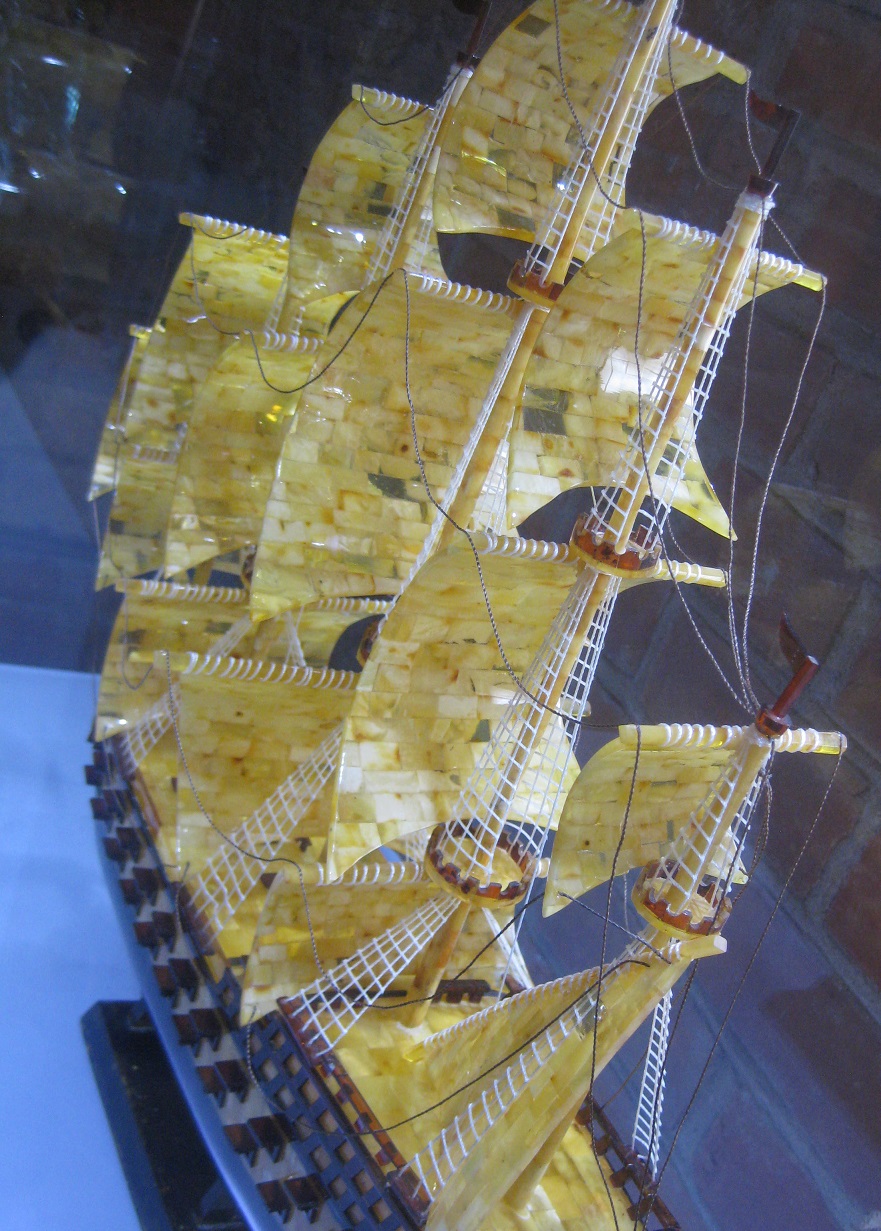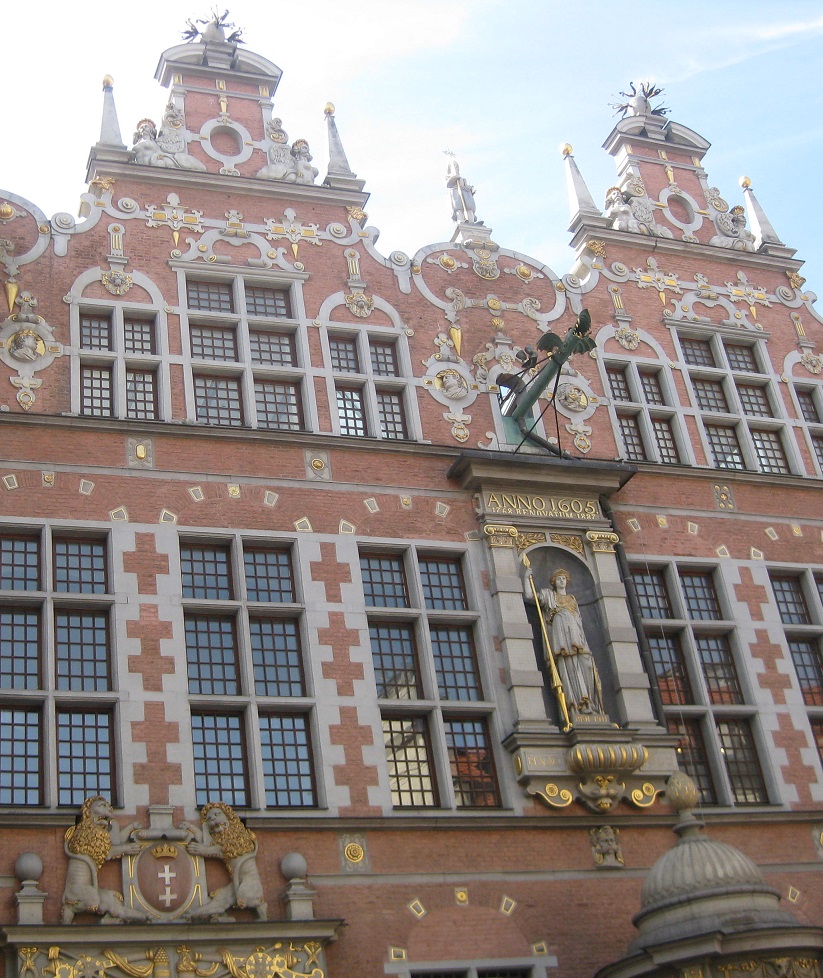We spent one day in Gdansk.
- Amber Museum: In the words of B,
 ‘I would have been happy with just that first room, but this thing keeps going!’ In total, it was about 5 floors worth of exhibit, though each was just one room, with a few offshoots. Climbing from floor to floor was also an exercise in people-avoidance, given the narrowness of the winding staircase. This is because the museum is actually housed in a 14th century Gothic building. But the museum itself: I loved it!
‘I would have been happy with just that first room, but this thing keeps going!’ In total, it was about 5 floors worth of exhibit, though each was just one room, with a few offshoots. Climbing from floor to floor was also an exercise in people-avoidance, given the narrowness of the winding staircase. This is because the museum is actually housed in a 14th century Gothic building. But the museum itself: I loved it!  They had bugs and plants trapped inside different forms of amber, along with magnifying glasses for a closer look. They covered the history of amber, from misconceptions about what it is (basically, sap) to its legion of medicinal uses – both real and wishful thinking. Turns out that amber comes in some fairly dark red, opaque versions, in addition the more transparent orange-tinged kinds I enjoy. And they had lots of things made out of amber: a chess board, jewelry boxes, clothing, necklaces, art works, etc. Worth it.
They had bugs and plants trapped inside different forms of amber, along with magnifying glasses for a closer look. They covered the history of amber, from misconceptions about what it is (basically, sap) to its legion of medicinal uses – both real and wishful thinking. Turns out that amber comes in some fairly dark red, opaque versions, in addition the more transparent orange-tinged kinds I enjoy. And they had lots of things made out of amber: a chess board, jewelry boxes, clothing, necklaces, art works, etc. Worth it. - Torture Museum: I didn’t actually intend to go here because – let’s face it, I’m squeamish. But it was actually in the same building as the amber, and on the narrow, winding path to exiting the building. When I tried to bypass it, the museum guards corralled me into the first exhibit room in the way you would a dumb child. And there actually was a child in that room, though why you would take a 7-year old to look at illustrations of those stretch torture machines is a mystery to me. To avoid the nasty looks, I ducked into the first few rooms for long enough that they might forget me, but then I booked it out of there.
- Monument to Fallen Shipyard Workers: This was quite the imposing monument: three incredibly tall crosses in a fairly industrial square, with a flower- and plaque-laden gate next to it. There wasn’t anything in the way of explanation, so B looked it up on his phone. It turned out to have been where Polish workers opposed big price increases for basic foods and demanded the right to unionize.
 It turned out to have been where the government asked them to return to work after protesting, and the police shot into those trying to do so. It turned out to have been where the Solidarity movement hammered out its aims and representatives, in a windowless room, with workers sleeping on styrofoam pads on the ground, so they could continue the next day. I liked that the character of the area wasn’t much changed from 1980: still fairly industrial, kind of out in the middle of nowhere. A moving tribute, I thought, marred only by the teen girl having her dad take glamour shots of her inside the memorial. She was holding her skirt out like a French courtesan mid-curtsy – with as much care for the pains represented by the museum as the aristocracy had for the Proletariat, before the latter began guillotining them. I know not everything is a somber moment and that people need to relate to history on their own terms, but it seemed wrong for this girl to be ignoring the purpose of the monument (remembering) in favor of a pretty Facebook profile pic.
It turned out to have been where the government asked them to return to work after protesting, and the police shot into those trying to do so. It turned out to have been where the Solidarity movement hammered out its aims and representatives, in a windowless room, with workers sleeping on styrofoam pads on the ground, so they could continue the next day. I liked that the character of the area wasn’t much changed from 1980: still fairly industrial, kind of out in the middle of nowhere. A moving tribute, I thought, marred only by the teen girl having her dad take glamour shots of her inside the memorial. She was holding her skirt out like a French courtesan mid-curtsy – with as much care for the pains represented by the museum as the aristocracy had for the Proletariat, before the latter began guillotining them. I know not everything is a somber moment and that people need to relate to history on their own terms, but it seemed wrong for this girl to be ignoring the purpose of the monument (remembering) in favor of a pretty Facebook profile pic. - Roads to Freedom Exhibit on Solidarity: This was more of a B-driven visit, and I’m glad that he insisted. It’s an interesting ode to the beginning of the end of the Soviet Union, and it provides some much-needed background on the movement. The computer summary, with photos, was the most educational, covering the university protests for free speech, the factory protests for bread, and the government quashing of both with the disproportionate violence of tanks and baton beatings. B was most impressed by the huge change wrought by these people who had no resources – both in terms of food and basic goods (which were being rationed on a very limited basis), but also in terms of guns. They managed to turn a country around with nothing more menacing than a few homemade molotov cocktails, fired at empty government buildings, and some homemade printing presses. I was most impressed that – with a few exceptions, the Polish government put the dissidents into local prisons, where they served their multi-year sentences, and emerged to be part of the movement again. Having grown up with stories of people sent to Siberian prison camps to die and ‘disappearances’ after the smallest act of government dissent, I kept being confused that the government hadn’t disposed of these people secretly and permanently.
- Hala Targowa (Market Hall): Yes, apparently, I am on a quest to visit every market in Europe. I was not impressed by this one, so after glancing inside, we left. It looked like a small flea market in a dark city hall-style building.
- Wielka Zbrojownia (Great Armory):
 We wandered inside this fancy building because we could, and it turned out to be housing a big art exhibition. It was a very weird mix: from brightly-colored paintings that reminded me of Lisa Frank folders/trapper keepers to a dress made out of red and black whips/sex toys.
We wandered inside this fancy building because we could, and it turned out to be housing a big art exhibition. It was a very weird mix: from brightly-colored paintings that reminded me of Lisa Frank folders/trapper keepers to a dress made out of red and black whips/sex toys.
What We Skipped:
- The Big Crane: When I had done my research on Gdansk, I had simply written down ‘Big Crane,’ seeing as how the guide had said it was, “one of the defining symbols of Gdańsk.” After all, how hard is it to spot a giant crane? Well, turns out that it’s both hard and easy. The easy part was because we spotted about 18 cranes as we rode the train or walked around the city. The hard part was because it turns out that the one in question doesn’t actually resemble a crane anymore. I am not sad about missing this.
- Archeology museum: Pomeranian history pre-13th century: There are only so many museums you can go to in a day’s visit to a city.
- Maritime Museum: Ditto.
- Lighthouses: Not only have we seen lighthouses before, but I can’t seem to get too excited about a lighthouse that’s a replica of one in Cleveland, no matter how cool it is. I’d rather (*gasp*) see the original.
